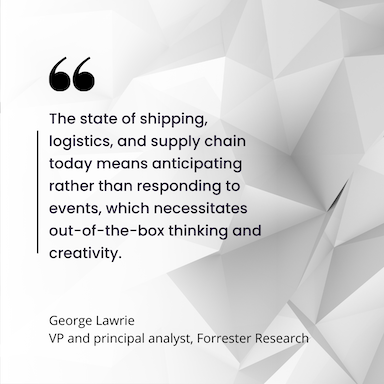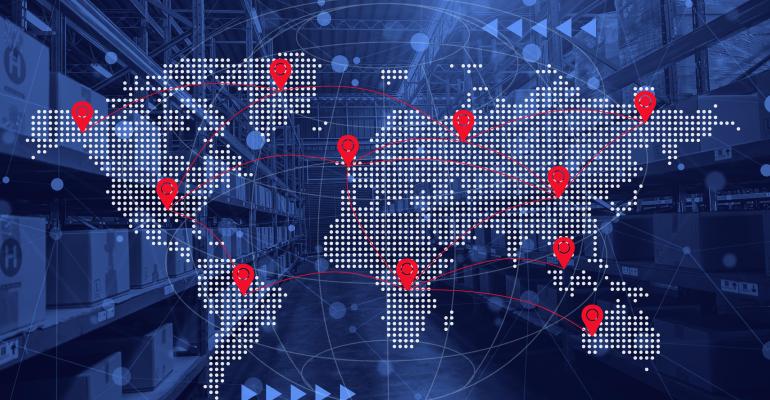Throughout his experience as a systems architect, engineer, consultant, and business lead, Onur Kutlubay diligently explored various business opportunities. By 2016, he had come up with his big idea: a shipping platform designed to assist global consumers who faced challenges purchasing products from the U.S. due to complex and expensive shipping options.
“If you’re living in Germany and want to buy a beachball from Target, a gift from Amazon, and a dress from Macy’s, that meant three different shipments from the U.S. to Germany,” Kutlubay explained.
His vision involved creating a system that consolidated the purchase process and optimized shipping and distribution. The software would handle everything, from consolidating purchased items to managing international shipping and customs. Additionally, it would integrate with the supply chain, including major shippers like DHL, FedEx, and UPS. The software would even facilitate international payment methods.
Navigating System Components
To develop the system, Kutlubay’s development team relied mostly on developer coding, using .NET Core for back-end development due to its ability to build high-performance web applications compatible with both Windows and Linux servers. He opted for the Model-View-Controller architectural pattern to construct scalable and maintainable web applications. The front end of the software is powered by Vue.js, a progressive JavaScript framework.
Other components of the software included the following:
- The team adopted a microservices architecture to enhance scalability, maintainability, and fault tolerance. Each microservice focuses on a specific domain, enabling the team to independently develop, deploy, and scale them. The approach efficiently distributes the workloads.
- Windows services were implemented for background tasks such as scheduled data processing and maintenance jobs.
- Robust logging frameworks capture and analyze system events, errors, and user interactions.
- To strengthen security, the team incorporated IP restrictions.
- MySQL serves as the software’s relational database management system.
- The entire application runs on AWS, which allows YouParcel to optimize the application’s performance by selecting data center locations that are geographically closer to its users.
At the same time, the team knew its limits and turned to commercial SaaS applications when it made sense. These included applications for supplier management and warehouse management.
The Role of APIs
APIs play a critical role in many aspects of the system. For payment processing, YouParcel integrates with established third-party payment systems like PayPal and Stripe through APIs. The system also connects to global shipping companies via APIs for label creation.
The most important of the APIs is YouParcel’s own shipping API, developed from scratch. Developing the API involved designing the data model it would use, defining the data structure, coding the API endpoints, implementing business logic, and integrating with data sources. The team also focused on extensive testing, documentation, optimization, and security measures to ensure the API’s reliability and performance.
Automating Global Shipping
With these systems in place, customers can easily notify YouParcel about the products they want to have shipped. Upon arrival at YouParcel’s warehouse, the products are consolidated into a single pallet or box for international transfer. The system then identifies the optimal carrier; generates a label based on customer details; and electronically creates a commercial invoice, customs declaration, and other necessary paperwork. The selected carrier then picks up the parcel and delivers it to the customer.
To facilitate smooth overseas shipping, YouParcel has automated the entire customs clearance process. That means submitting the manifest—a list of all items being shipped—even before the plane departs from the origin airport.
“We’re trying to provide that seamless integration between our customers and these vendors so there isn’t any manual work involved,” explained Kaan Gul, a product manager at YouParcel. “That’s why we have API integrations with our customs brokers and [carriers]. That way, they only need to create a manifest through our dashboard, and that data will automatically be transferred to a customs broker on the back end.”
Along the way, the team has prioritized the integration of cutting-edge technologies where applicable. For example, the shipping engine uses AI in several ways. AI is used to capture and organize information following international rules for customs declaration. Additionally, it plays a role in detecting address errors or fraudulent recipients by cross-referencing different sources of information within YouParcel’s user profile database. AI is also used for route optimization: By analyzing historical shipping data, weather conditions, traffic patterns, and other variables, it can determine the most efficient and cost-effective shipping routes.
From Shipping to Fulfillment
As YouParcel expanded during the next few years, Kutlubay identified a new business opportunity.
“I thought about Amazon, which started as a bookstore and evolved into much more,” Kutlubay said. “As [Amazon] grew, they had a huge IT capacity and realized they could serve more than just the Amazon website, so they launched AWS. At the same time, they had a vast warehouse network, so they started offering fulfillment services. Why couldn’t we do the same?”
Because YouParcel had become so adept at cross-border shipping, it expanded its services to include order fulfillment, known as Shop and Ship. The company began storing online sellers’ inventory in its warehouse so it could fulfill orders and manage returns.
This initiative aligned with Kutlubay’s vision of enabling customers to buy items from different U.S. companies, send them to a unique address within a YouParcel warehouse, and then have the items consolidated and shipped. Taking it a step further, Kublubay introduced a service called Shop for Me. Under the service, customers can simply send YouParcel a link to the product they want, and YouParcel takes care of making the purchases and shipping them through its system.
To accomplish all this, the development team built on its core stack, adding third-party integrations, components, and technologies as needed. Handling returns, for example, demanded a system capable of capturing package data. The process also required real-time inventory tracking, predictive analytics, and demand forecasting. Furthermore, it needed a user interface where customers could log in, view their packages, pay shipping costs, and initiate returns.
George Lawrie, vice president and principal analyst at Forrester Research, acknowledged that technology-forward and proactive approaches to logistics and supply chain management align well with the times.

“The state of shipping, logistics, and supply chain today means anticipating rather than responding to events, which necessitates out-of-the-box thinking and creativity,” Lawrie said. That means neither automation nor humans have all the attributes necessary to meet the requirements of modern industrial enterprises or their customers. Instead, a collaborative approach is essential, where both automation and human capabilities work together synergistically.
Productization
When customers began inquiring about the possibility of connecting to YouParcel’s systems on their own to initiate the shipping process and generate labels, Kutlubay took note.
“That’s when we realized that our core product deserved to be on its own,” he said.
The development team got to work creating a productized version of the shipping engine, named ExperShip, in late 2019. It was launched as a standalone product at the beginning of 2020. The development team added essential features, including a billing module for direct customer billing, automatic manifest functionalities, and an online payment system to enhance ExperShip’s capabilities.
ExperShip now has its own customer base and is experiencing continuous growth. For instance, a customer with an eBay store can connect their store to ExperShip. With the integration, every sale made on the eBay store prompts a connection to the ExperShip API to generate a shipping label.
YouParcel’s Next Frontier
An upcoming plan is to transform ExperShip into a full-fledged white-label solution tailored for shipping companies that want to offer online services to their customers. Additionally, YouParcel wants to broaden the level of integration between the core engine and partners. The expansion aims to incorporate further capabilities, such as product pricing updates, into the platform.
About the author
 Karen D. Schwartz is a technology and business writer with more than 20 years of experience. She has written on a broad range of technology topics for publications including CIO, InformationWeek, GCN, FCW, FedTech, BizTech, eWeek and Government Executive.
Karen D. Schwartz is a technology and business writer with more than 20 years of experience. She has written on a broad range of technology topics for publications including CIO, InformationWeek, GCN, FCW, FedTech, BizTech, eWeek and Government Executive.




